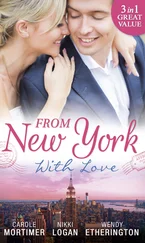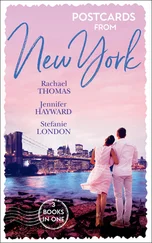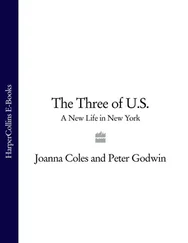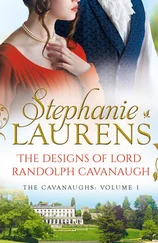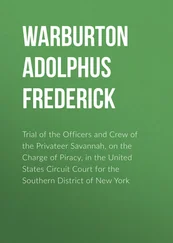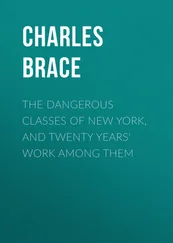Aunt Mary Ridge was a member of the Indianapolis school board, and so was attuned to the ways in which the minds and values of youth could be insidiously corrupted. Her pince-nez hung on a ribbon around her neck and lay over her ample bosom as she sat in our kitchen in silent support of tiny, gray Uncle Clayton, who quivered with age and emotion as he told me to “always remember what you learned in Sunday school, Danny, and the things your mother and father taught you, and don’t be taken in by professors with funny ideas who don’t believe in God, no matter how smart they are.” I squirmed in discomfort, knowing these good people loved me and wanted to protect me, but wishing they would trust me and treat me like an adult.
That’s how the Woollens were treating me at dinner on the train to New York.
We spoke of grand, sophisticated subjects, like the Broadway shows the Woollens were going to see on their trip. They had tickets for Henry Fonda in Point of No Return , a drama based on one of the novels by John P. Marquand about a burning issue of the day, the compromises of businessmen for their work. The Woollens would see other plays and musicals as well, but it was difficult to choose from the riches of a Broadway theater that also offered, in January 1952, Julie Harris in I Am a Camera , José Ferrer in The Shrike , Hume Cronin and Jessica Tandy in The Four Poster , Katherine Cornell in The Constant Wife , Audrey Hepburn in Gigi , Celeste Holm in Anna Christie , Barbara Bel Geddes in The Moon Is Blue , Uta Hagen in Saint Joan , and Laurence Olivier and Vivian Leigh in Caesar and Cleopatra . That did not even count the musicals, which included Gertrude Lawrence in The King and I , Phil Silvers in Top Banana , and Bert Lahr in Two on the Aisle .
As we discussed such exciting choices—ones I’d be able to make for myself by getting standing-room tickets while I was a student—I had the glorious feeling I was living a scene out of one of the novels of F. Scott Fitzgerald, my favorite author. The Woollens were the only people I knew in Indianapolis who might be in a Fitzgerald scene. Their oldest son, Evans Jr. (known as Chub), was following in Mr. Woollen’s footsteps at Yale, and Kithy was already destined for Radcliffe. It was Mrs. Woollen who first recommended to me The Far Side of Paradise , the biography by Arthur Mizener that began the Fitzgerald revival of the fifties.
Sometimes fiction endorses and reaffirms experience, as it did then in the dining car with the Woollens. I knew I was feeling the kind of emotion described in Gatsby when Nick Carraway recalls with nostalgia going home from New York on the train in college at Christmastime:
When we pulled out into the winter night and the real snow, our snow, began to stretch out beside us and twinkle against the windows, and the dim lights of small Wisconsin stations moved by, a sharp wild brace came suddenly into the air. We drew in deep breaths of it as we walked back from dinner through the cold vestibules, unutterably aware of our identity with this country for one strange hour, before we melted indistinguishably into it again.
That’s my Middle West—not the wheat or the prairies or the lost Swede towns, but the thrilling returning trains of my youth.
Now I was riding on one of those mythical trains, and as I “walked back from dinner through the cold vestibules,” I realized I was on the journey because of two teachers, one of whom I had not yet met.
A young English instructor at Indiana University named Rexmond Cochrane had taken me under his wing, encouraged my writing, even urged me to enlarge my education by continuing it in some other part of the country, so I could learn what the world was like away from the familiar turf on which I’d grown up. Perhaps he instinctively knew that was what I wanted to hear, for I felt like an exile in Indiana, having retreated there in shame after starting out at Northwestern University, just outside Chicago in Evanston, and then running back home after being rejected across the board during fraternity rush week.
Fraternities were the stamp of approval for young men growing up in the Midwest in the fifties, and seemed a matter of life-shaping significance, as important to many people I knew as the choice of a college. I immediately understood how crucial it was for Scott Fitzgerald and his autobiographical hero Amory Blaine, in This Side of Paradise , to get into the right eating club at Princeton (I translated the Cottage Club as Princeton’s version of Sigma Chi).
My fraternity rejection probably seared more deeply because I took it as judgment of my awful case of adolescent acne. It seemed a silent way for the world of beautiful people to which I aspired—the winners and leaders, prom queens and team captains—to give me the message affirming my own worst fears: you’re ugly, no good, not wanted.
Back home again in Indiana, I pledged the Kappa Sigma fraternity at Bloomington, where I was known to friends and their older brothers and accepted in spite of my blemished face. But it only made me feel guilty for joining a system that I knew from my own painful experience hurt the people it rejected, made them feel like outcasts, ashamed and unwanted. On top of suffering the stupid physical punishment of hazing (beaten with polished wooden paddles by upperclassmen until bruised black-and-blue) and the inane indignities of Hell Week, I felt like a phony. I spent more time reading, especially novels, perhaps as a way of escaping the world I thought I had wanted but now found uncomfortable and silly. I was ripe for Rex Cochrane’s encouragement to move on.
Tea with Mr. Cochrane and his welcoming wife at their graduate student apartment stoked my growing excitement about books as I saw their own love of them. It was a love expressed not only in the abundance of volumes that lined the walls and grew in piles on tables and desks, or the way the Cochranes spoke about books and the stories and ideas in them, but also in how they handled them, with a kind of familiar affection that I’d seen before in the way good basketball players picked up and held a basketball. This was the opposite of the attitude toward books of some of my fraternity brothers—like Brick, the jock who had plucked a novel out of my arm once, held it up like a dirty sock, and said, “You really like that stuff, don’t you?”
Mr. Cochrane loaned me his own precious underlined, annotated copy of one of his favorite books, Sherwood Anderson’s A Story Teller’s Story , and I felt I’d been given a trust, the temporary guardianship of a sacred text that was no mere relic but a tangible source of knowledge and power. No wonder the essay I read that semester that struck me so deeply it changed the course of my life, catapulting me on to Columbia, was called “Education by Books.”
When I got back to my seat in one of the coaches after dinner with the Woollens on the train that night, I pulled out the anthology the essay was in so I could read it again, for inspiration as well as affirmation of the road I was now taking. The essay was neither a polemic nor a call to action, but a quietly reasoned, sweetly ironic argument for a college education consisting solely of four years of reading, discussing, and finally understanding the books that were “the acknowledged masterpieces of the past three thousand years: masterpieces of poetry, of history, of fiction, of theology, of natural science, of political and economic theory”—from Homer, the Bible, and Herodotus, to Freud, Proust, and Einstein.
The author of the essay admitted that students who finished the prescribed reading of great books without the frills might not immediately be able to cope with some of the aspects of the world they entered: “The only thing, indeed, to be said in their favor was that they were educated.… They might not save the world. They might not change it. But they would always be able to see where its center was.”
Читать дальше







